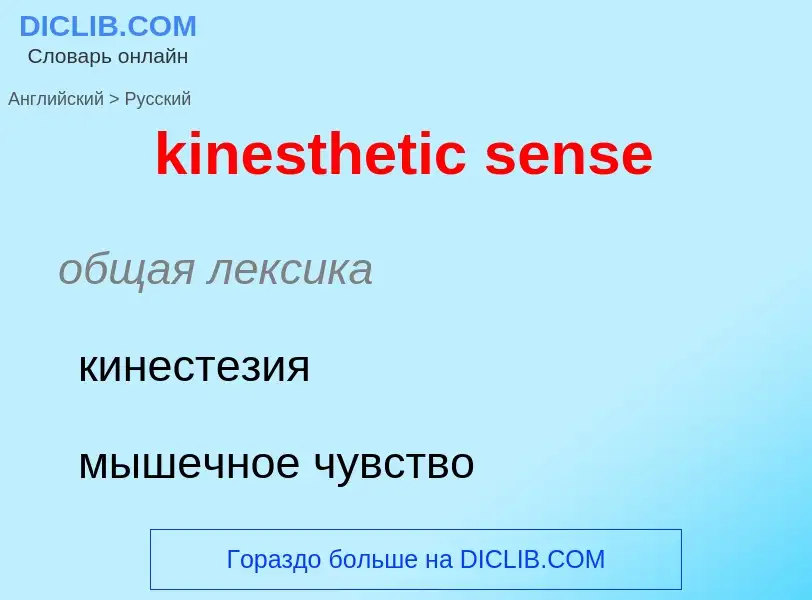Translation and analysis of words by ChatGPT artificial intelligence
On this page you can get a detailed analysis of a word or phrase, produced by the best artificial intelligence technology to date:
- how the word is used
- frequency of use
- it is used more often in oral or written speech
- word translation options
- usage examples (several phrases with translation)
- etymology
kinesthetic sense - translation to russian
общая лексика
кинестезия
мышечное чувство
общая лексика
воспринятый извне
отвечающий на внешнее раздражение
медицина
экстероцептивный
медицина
проприоцептивная система
Definition
Wikipedia
In linguistics, a word sense is one of the meanings of a word. For example, a dictionary may have over 50 different senses of the word "play", each of these having a different meaning based on the context of the word's usage in a sentence, as follows:
We went to see the play Romeo and Juliet at the theater.
The coach devised a great play that put the visiting team on the defensive.
The children went out to play in the park.
In each sentence different collocates of "play" signal its different meanings.
People and computers, as they read words, must use a process called word-sense disambiguation to reconstruct the likely intended meaning of a word. This process uses context to narrow the possible senses down to the probable ones. The context includes such things as the ideas conveyed by adjacent words and nearby phrases, the known or probable purpose and register of the conversation or document, and the orientation (time and place) implied or expressed. The disambiguation is thus context-sensitive.
Advanced semantic analysis has resulted in a sub-distinction. A word sense corresponds either neatly to a seme (the smallest possible unit of meaning) or a sememe (larger unit of meaning), and polysemy of a word of phrase is the property of having multiple semes or sememes and thus multiple senses.


